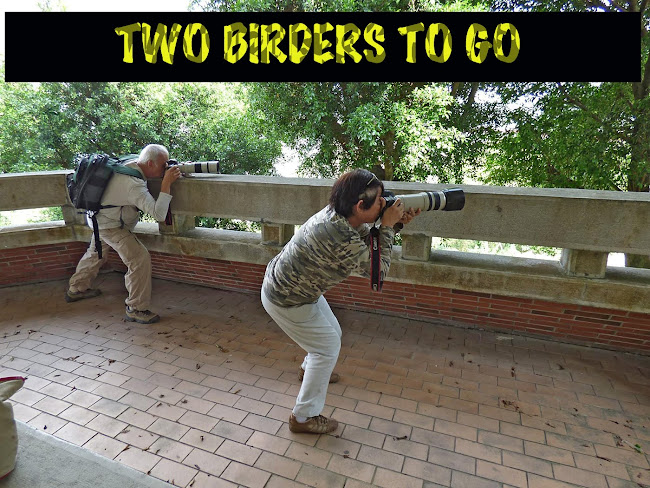When I learned that new friends Irene Dy and Rob Hutchinson were going there Thursday I asked them if my wife and I could tag along. To my delight they said they'll pick us up at 4:30 in the morning.
The night before there had been concerns that it may be quite a rainy Thursday - based on weather forecasts - and discussions whether we should postpone the trip to Friday. I don't know but I suddenly had a sense of confidence and decided that we should follow the original plan. Guess what? It was sunny the whole time we were at Taytay Falls.
The place itself was beautiful! Were it not for the long walk from the parking area to the falls, I'd probably consider visiting this place again. The waters cascading were so clean and fresh and is actually being used to irrigate the rice fields below. It saddens me however that even the basic amenities are lacking. What was once a structure for restrooms now lie rotting through obvious neglect.
We came here expecting birds. Indigo-banded Kingfishers in particular. According to Irene, who had been here before, the kingfishers perch obligingly and quite close for great photo-ops. We stationed ourselves beside the cool stream. Over an hour has passed and still there was no Indigo-banded in sight.
Thankfully, a Rough-crested Malkoha peered curiously though the dense leaves of a tall tree across the stream.
A White-throated Kingfisher was noisily calling not too far from it.
Rob decided to go downstream to see of our target bird was there. A few minutes later he came huffing back and asked us to follow him. Only to lose it again after just getting a glimpse at it. While waiting for the tiny kingfisher to return, we were delighted to see a Grey Wagtail busily hunting for insects on the mossy boulders.
Once again Rob came and told us that the Indigo-banded has moved upstream close to the falls itself. Once again we hauled our camera gear and trekked back to where Rob saw the bird. For a good hour or so, the male Indigo-banded stayed in that area and we were finally able to take its picture.
At around noontime, the picnickers came. Lots of them. We knew it was time to go.
We were trudging through the narrow trail when Rob stopped and perked his ear. Soon he was pointing at a tree festooned with mistletoes. Both Orange-bellied and Red-keeled Flowerpeckers were picking the fruits. Nearby a flock of Yellowish White-eyes were congregating on another fruiting tree.
 |
| Immature Red-keeled Flowerpecker |
Then came the lull. We lingered awhile hoping that the Scale-breasted Malkoha would appear - after all it had been seen, and photographed - at this very exact location by everyone and his uncle, it seemed like. It never showed up.
But that's how it is in bird photography - sometimes you get what you don't expect and sometimes you miss what you expected - but in all things I am thankful.
Now it's time for lunch and the barbecue that Irene brought looked so mouth-wateringly delicious!












.jpg)

















